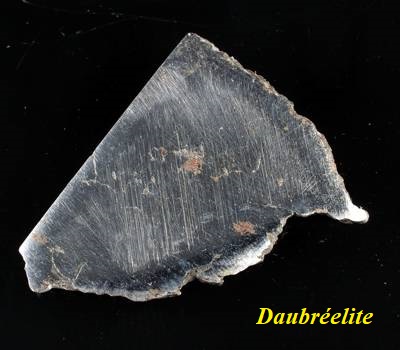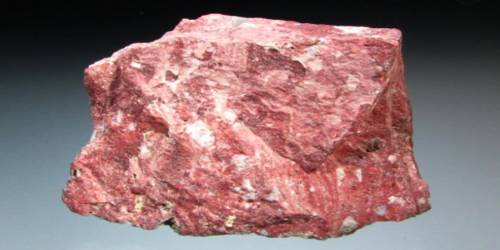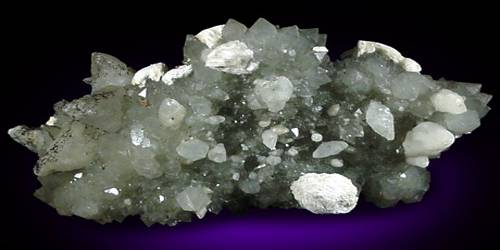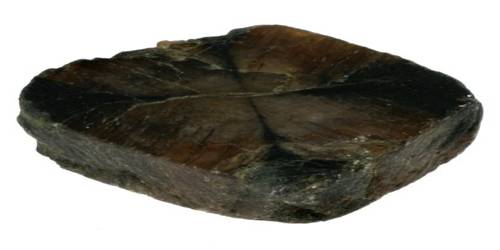Daubréelite is a rare sulfide mineral. It crystallizes with cubic symmetry and has a chemical composition of Fe2+Cr3+2S4. It is a mineral consisting of a black chromium iron sulfide occurring in some meteoric irons. It usually occurs as black platy aggregates. It has a black color, metallic luster, and is associated with troilite.
Daubréelite was named after the French mineralogist, petrologist, and meteoriticist Gabriel Auguste Daubrée. The mineral was first described in 1876 in the American Journal of Science. Its type locality is the Coahuila meteorite, Bolsom de Mapimí, Coahuila, Mexico.
General Information
- Category: Sulfide mineral
- Formula: Fe2+Cr3+2S4
- Crystal system: Cubic
- Crystal class: Hexoctahedral (m3m)

Properties
Daubréelite is a sulphide of chromium observed in some meteoric irons. In the Nickel-Strunz classification, daubréelite is part of the “Sulfides and Sulfosalts” and further a “metal sulfide with a metal-sulfide ratio of 3:4 and 2:3”.
- Color: Black
- Crystal habit: Massive, platy aggregates, exsolution lamellae in troilite
- Cleavage: Distinct
- Fracture: Uneven
- Tenacity: Brittle
- Mohs scale hardness: 4.5-5
- Luster: Metallic
- Streak: Brown or black
- Diaphaneity: Opaque
Occurrences
Daubréelite is found in iron meteorites as an inclusion in meteoric iron (kamacite and taenite). Further paragenetic minerals are alabandine, enstatite, graphite, plagioclase, and schreibersite.
According to one source daubréelite has been described from 34 localities. The mineral was also found in the Hadley Rille meteorite which was retrieved by the Apollo 15 mission in the Rima Hadley (Mare Imbrium).
Association: Troilite, kamacite, orthoenstatite, plagioclase, alabandite, graphite, schreibersite.
Information Source:
















